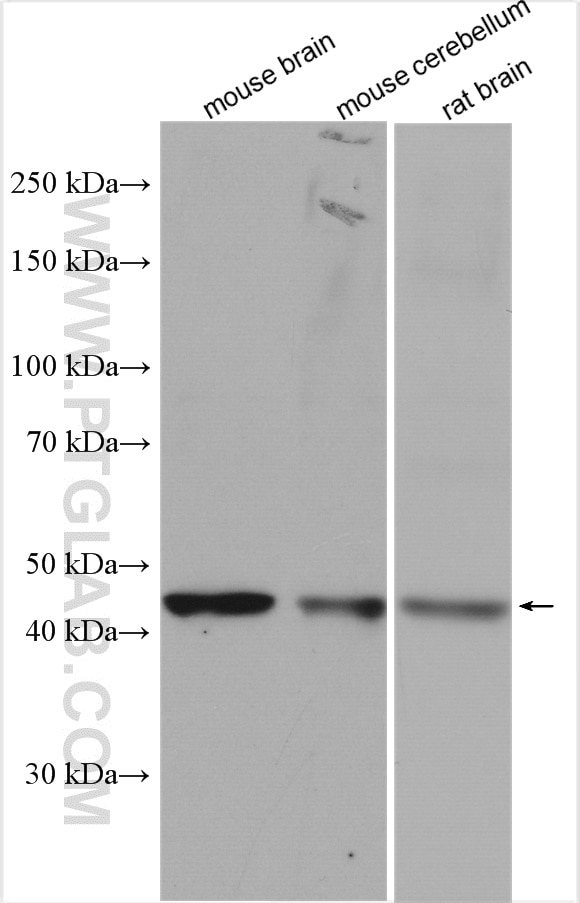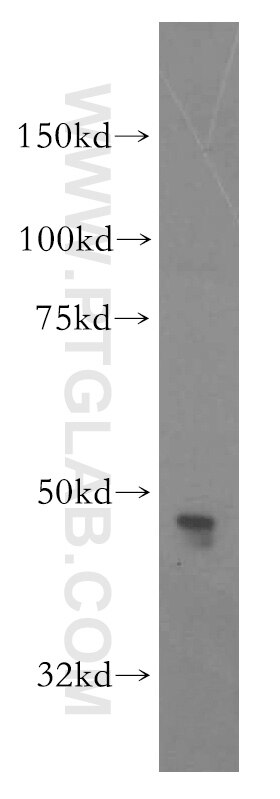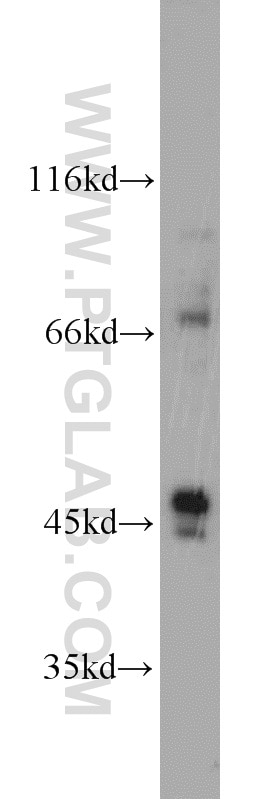Tested Applications
| Positive WB detected in | mouse brain tissue, Jurkat cells, SH-SY5Y cells, mouse cerebellum tissue, rat brain tissue |
Recommended dilution
| Application | Dilution |
|---|---|
| Western Blot (WB) | WB : 1:500-1:2000 |
| It is recommended that this reagent should be titrated in each testing system to obtain optimal results. | |
| Sample-dependent, Check data in validation data gallery. | |
Product Information
15660-1-AP targets CADM3 in WB, ELISA applications and shows reactivity with human, mouse, rat samples.
| Tested Reactivity | human, mouse, rat |
| Host / Isotype | Rabbit / IgG |
| Class | Polyclonal |
| Type | Antibody |
| Immunogen |
CatNo: Ag8081 Product name: Recombinant human CADM3 protein Source: e coli.-derived, PET28a Tag: 6*His Domain: 1-398 aa of BC033819 Sequence: MGAPAASLLLLLLLFACCWAPGGANLSQDDSQPWTSDETVVAGGTVVLKCQVKDHEDSSLQWSNPAQQTLYFGEKRALRDNRIQLVTSTPHELSISISNVALADEGEYTCSIFTMPVRTAKSLVTVLGIPQKPIITGYKSSLREKDTATLNCQSSGSKPAARLTWRKGDQELHGEPTRIQEDPNGKTFTVSSSVTFQVTREDDGASIVCSVNHESLKGADRSTSQRIEVLYTPTAMIRPDPPHPREGQKLLLHCEGRGNPVPQQYLWEKEGSVPPLKMTQESALIFPFLNKSDSGTYGCTATSNMGSYKAYYTLNVNDPSPVPSSSSTYHAIIGGIVAFIVFLLLIMLIFLGHYLIRHKGTYLTHEAKGSDDAPDADTAIINAEGGQSGGDDKKEYFI Predict reactive species |
| Full Name | cell adhesion molecule 3 |
| Calculated Molecular Weight | 43 kDa |
| Observed Molecular Weight | 38-50 kDa |
| GenBank Accession Number | BC033819 |
| Gene Symbol | CADM3 |
| Gene ID (NCBI) | 57863 |
| RRID | AB_2068044 |
| Conjugate | Unconjugated |
| Form | Liquid |
| Purification Method | Antigen affinity purification |
| UNIPROT ID | Q8N126 |
| Storage Buffer | PBS with 0.02% sodium azide and 50% glycerol, pH 7.3. |
| Storage Conditions | Store at -20°C. Stable for one year after shipment. Aliquoting is unnecessary for -20oC storage. 20ul sizes contain 0.1% BSA. |
Background Information
CADM3, also known as IGSF4B or TSLL1, is a transmembrane protein that is involved in the cell-cell adhesion. CADM3 is mainly expressed in the nervous system and plays a role in the formation of synapses, axon bundles, myelinated axons and cerebellar morphogenesis (PMID: 18420026).
Protocols
| Product Specific Protocols | |
|---|---|
| FC protocol for CADM3 antibody 15660-1-AP | Download protocol |
| WB protocol for CADM3 antibody 15660-1-AP | Download protocol |
| Standard Protocols | |
|---|---|
| Click here to view our Standard Protocols |








